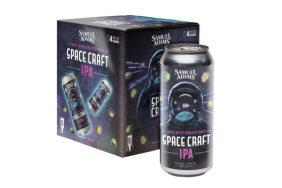
In the last few years, the biggest trend in craft brewing has been the use of cans instead of bottles. It almost seems that if you want to make a name for yourself in American craft brewing, you need to can at least a few of your offerings. Alchemist, 21st Amendment, Oskar Blues, Harpoon, Brooklyn, Magic Hat, Butternuts and Surly are just a few of the well-known craft breweries that can their beer. But why exactly is canned craft beer so popular?
The Benefits of Canned Beer
- The beer is completely protected from UV light. This protection prevents the hop compounds from changing into a “skunky” aroma.
- Aluminum cans are lighter and more portable than glass bottles. Consumers can take them camping/backpacking and not have to worry about taking up too much space and weight when returning home.
- Cans are allowed at more public recreation areas where glass might cause a hazard. Beaches, rivers, lakes, and pools are just a few examples. 4) Last, and certainly not least, they are more recyclable, taking less energy to get the material back into the supply chain.
As canning technology has improved, brewers have begun to rethink the way their products are presented to consumers. “A number of us remember when you would drink a can of beer and it would have a metallic taste to it,” says Mavericks Brewing’s Brewmaster, Shane Aldrich. “Now the cans have a polymer lining that prevents the beer from coming into direct contact with the aluminum.”
A Maverick is someone who is a risk-taker who is innovative, and who is unwilling to compromise. “So when we launched Mavericks Brewing we determined that our beers would follow this philosophy,” says Mavericks Brewing’s CEO, Steve Morgan.
Cans are infinitely recyclable and extremely easy to throw in your backpack before you head out for the day. “The fact that they are more cost-effective is definitely appealing as well,” says Dale Katechis, founder of Oskar Blues. “You can pack more cans into a truck than you can bottles – they’re lighter and easier to stack – no brainer.”

Logistically, cans are perfect for beer. “They don’t let any light in, which is the major thing that causes beer to go bad,” says Shaun O’Sullivan, co-owner and Brewmaster at 21st Amendment. “You can also take cans places you can’t take bottles, and they don’t break. More cans are recycled than bottles and they take less energy to make. Along that idea we realized we’d be able to put more cases of cans on a pallet compared to glass, therefore taking less energy to ship.”
An Idea Is Born
“We received a fax (yes, a fax) from a company in Canada that was looking for someone who wanted to can their beers,” says Katechis. “We looked into all the advantages behind canning beer and never looked back.”
When Katechis first started canning his beers, he noticed the apparent stigma associated with it. “No one believed there was such thing as quality beer in a can. We put cans in hands and showed all the naysayers what’s up.”
O’Sullivan and his business partner Nico Freccia were trying to find ways to expand their business back in 2005. That year, they took a trip out to Colorado for the Great American Beer Festival. While there, they visited Oskar Blues and decided that since it worked for Katechis, it would probably work for them. “I went back to the Bay Area to tell Nico about my idea and he thought it was the dumbest idea in the world until we looked into all the great reasons for canning,” says O’Sullivan.
“We think its rad as hell to see all these newer craft breweries taking a risk and canning their beers,” says Katechis. “You see them kind of get risky in other creative ways as well with either their marketing campaigns or graphics that seem to really pay off. I like the direction this industry is going.”
Although the trend of canning beer began with Oskar Blues, a handful of others across the country have joined them. For many years, the can package was not open to the craft brewing community because canning equipment was much too large for most breweries to consider. “That changed when Cask Brewing Systems out of Calgary, Canada began manufacturing smaller and more affordable equipment for the craft brewer,” says O’Sullivan.
Another reason this trend began was because larger can manufactures like Ball and Rexam relaxed their can minimum order amounts making it more economical for the small craft brewer. “In the past you had to purchase and store millions of cans and the only equipment available for canning beer was large automated systems built for very large breweries.” Luckily for us, that has all changed.
Cans Are A Life-Style Packaging

“You can take a can of beer to the top of the mountain when hiking or to the beach or lake,” says O’Sullivan. From a marketing point of view a can is the perfect way to advertise beer because you can utlitize the entire surface. “Our cans are packaged in a cardboard box where we’re able to showcase some incredible graphic design as well as tell our story.” Plus, like the can, that box is also completely recyclable.
As with other means of packaging products the concept of canning craft beer is by no means extraordinary. The screw-off cap on high-end wines, the use of synthetic corks, wine in a box and even wine on tap are all similar examples from the beverage industry. “What we are seeing is simple but effective innovation in delivery and packaging methods that are more functional for the changing demographics and therefore are becoming more accepted,” says O’Sullivan. “Now there are hundreds of breweries canning their beer including the larger craft breweries like Sam Adams, Sierra Nevada and New Belgium.” It’s safe to say that canned craft beer is here to stay.








